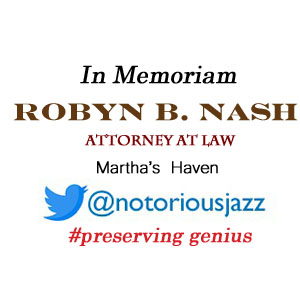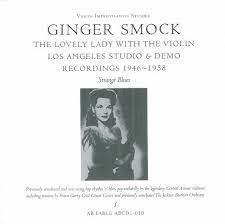
Daily Dose Of Jazz…
Ginger Smock was born Emma Smock on June 4, 1920 in Chicago, Illinois and grew up in Los Angeles, California. She graduated from Jefferson High School and studied violin privately with Bessie Dones. By the time she hit the age of 10 she appeared as a soloist at the Hollywood Bowl. She was featured on Clarence Muse’s radio program at the age of thirteen performing Edward MacDowell’s To A Wild Rose. She earned degrees in music from Los Angeles City College, and the Zoellner Conservatory of Music. At the latter institution she was a pupil of Edith Smith.
During 1944 she led a trio with Nina Russell and Mata Roy. In 1951, she led an all-female sextette, featuring Clora Bryant, on the Chicks and the Fiddle show hosted by Phil Moore that broadcasted for six weeks on CBS. The next year she was the featured soloist on KTLA’s variety show, Dixie Showboat.
1953 had Smock recording as part of a group with Gerald Wiggins, Freddie Simon, Red Callender, and Rudy Pitts, accompanying the vocalist Cecil “Count” Carter.
During the mid 1970s, she spent ten years as concertmaster of show orchestras in Las Vegas. In addition to her work in jazz and rhythm & blues, she performed with the All City Symphony Orchestra of Los Angeles. A violin owned by Smock is in the collection of the National Museum of African American History and Culture
Violinist, orchestra leader, and local Los Angeles television personality Ginger Smock, who recorded as a leader but is perhaps best known from her recordings with the Vivien Garry Quintet, transitioned on June 13, 1995.
More Posts: bandleader,concertmaster,history,instrumental,jazz,music,violin
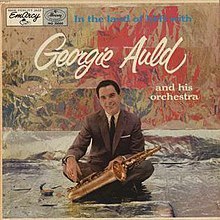
Daily Dose Of Jazz…
Skeets Herfut was born Arthur Relsmond Herfut on May 28, 1911 in Cincinnati, Ohio and raised in Denver, Colorado. While attending the University of Colorado he played in different bands. By 1934 he was performing with Smith Ballew, and through the decade with Jimmy and Tommy Dorsey, and Ray Noble.
After moving to California, Herfut worked with Alvino Rey, then served in the Army from 1944 to 1945. After the war, he flourished as a studio musician in Hollywood, California and led his own band. Between 1946 and 1947 he performed with Benny Goodman and Earle Spencer.
Into the 1960s Skeets’ studio sessions were with Billy May, Louis Armstrong, Georgie Auld, Jack Teagarden, Stan Kenton and again with Goodman. By the end of the 1960s he joined the Ray Conniff orchestra for several tours of Japan and Germany as well as recording sessions during the 1970s.
Herfurt bacme a member of Lawrence Welk’s orchestra and weekly television show from 1979 to 1982, performing on lead alto saxophone. During his career he recorded with Glen Gray, Ray Anthony, Joe “Fingers” Carr, Frankie Carle, Larry Clinton, Bob Eberly, Helen O’Connell, The Four Freshmen, Bob Keene and Pete Rugolo.
Saxophonist and clarinetist Skeets Herfut, who appeared as a saxophonist in the 1956 film The Nightmare, playing clarinet on the soundtrack, and performed on the soundtrack to the 1974 film The Fortune, transitioned in New Orleans, Louisiana at the age of 80 on April 17, 1992.
More Posts: clarinet,history,instrumental,jazz,music,saxophone
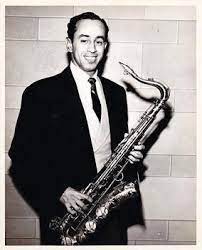
Three Wishes
The question of three wishes came up during the laughter and music one night and Paul Gonsalves simply said:
- “May I wish you happiness, prosperity, and all that you desire for here and ever after.”
*Excerpt from Three Wishes: An Intimate Look at Jazz Greats ~ Compiled and Photographed by Pannonica de Koenigswarter
More Posts: baroness,history,instrumental,jazz,music,pannonica,saxophone,three,wishes
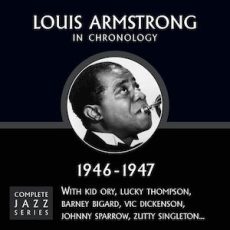
Daily Dose Of Jazz…
Moon Edward Mullens was born on May 11, 1916 in Mayhew, Mississippi and raised in Chicago, Illinois. He played locally around the city early in his career, including with Half Pint Jaxon.
He moved to New York City and played with Chris Columbus before joining Hot Lips Page’s band in 1938, where he first recorded. He played with Earl Bostic, Columbus again in 1941, and Benny Carter before serving in the military during World War II.
After the war he played with Louis Armstrong between 1946 and 1947, Cab Calloway, Joe Thomas, and with Lionel Hampton on and off between 1949 and 1959. From 1959 to 1961 he worked with Duke Ellington, then left music permanently, setting up a photography business, never recording as a leader.
Trumpeter Moon Mullens transitioned on April 7, 1977.
More Posts: history,instrumental,jazz,music,trumpet

Daily Dose Of Jazz…
Born near Kyiv, Ukraine on April 22, 1920 Benjamin “Buzzy” Drootin moved to Boston, Massachusetts with his family when he was five. His father played the clarinet, and two of his brothers and his nephew were musicians. He began playing drums professionally as a teenager. At age twenty, he toured with the Jess Stacy All-Stars, a band that includeded Lee Wiley.
In 1940, he also toured with Ina Ray Hutton, then joined the Wingy Manone band. From 1947 until 1951, he worked as the house drummer at Eddie Condon’s night club in New York City. He was a bandleader at El Morocco club in New York City, and a member of the house band with his brother Al at George Wein’s Storyville club in Boston. During these years he worked with Doc Cheatham, Vic Dickenson, Bobby Hackett, Ruby Braff, Claude Hopkins, Jimmy McPartland, Pee Wee Russell, and Arvell Shaw.
Drootin recorded with Tommy Dorsey, Bobby Hackett, Jack Teagarden, Eddie Condon, Ruby Braff, Anita O’Day, George Wein, the Newport All-Stars, Lee Konitz, Sidney Bechet, PeeWee Russell and The Dukes of Dixieland. In 1968–69, he toured and recorded with Wild Bill Davison’s Jazz Giants and then formed Buzzy’s Jazz Family, borrowing some of Davison’s sidemen, Herb Hall and Benny Morton, plus added Herman Autrey on trumpet and his nephew, Sonny Drootin, on piano.
In 1973, after touring Europe and America, he returned to his hometown of Boston, where he and his brother Al and nephew Sonny formed the Drootin Brothers Band. They played at the Newport Jazz Festival. He played at the first Newport festival and at many festivals after that. He also played at the Los Angeles Classic Jazz Festival in the 1980s.
Drummer Buzzy Drootin transitioned on May 21, 2000 from cancer at the age of 80 at the Actors Fund Retirement and Nursing Home in Englewood, New Jersey.
More Posts: bandleader,drums,history,instrumental,jazz,music





